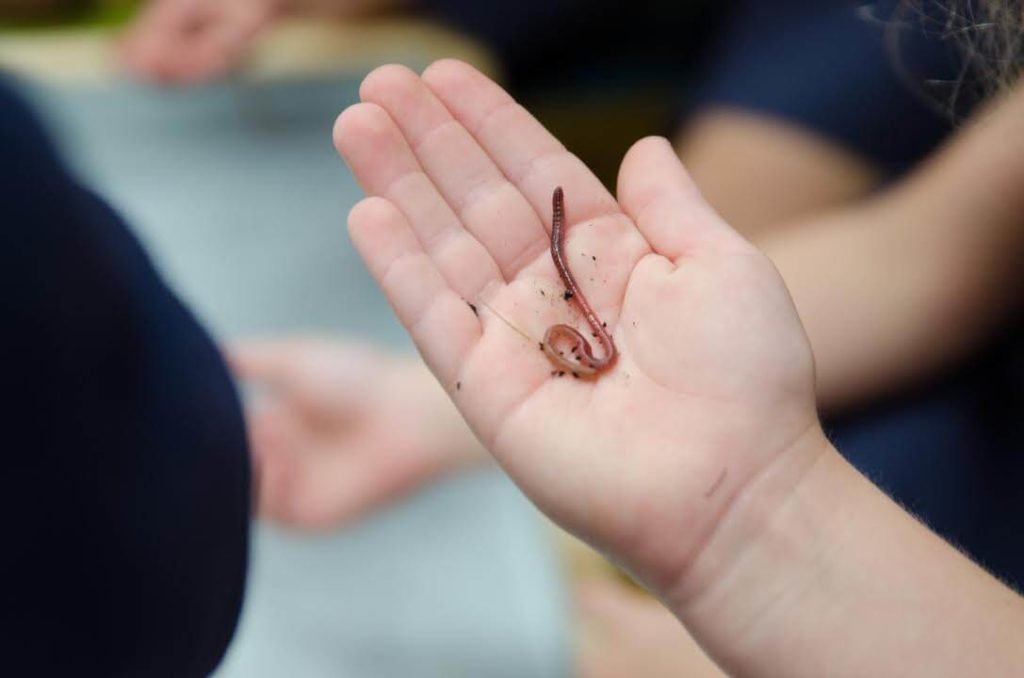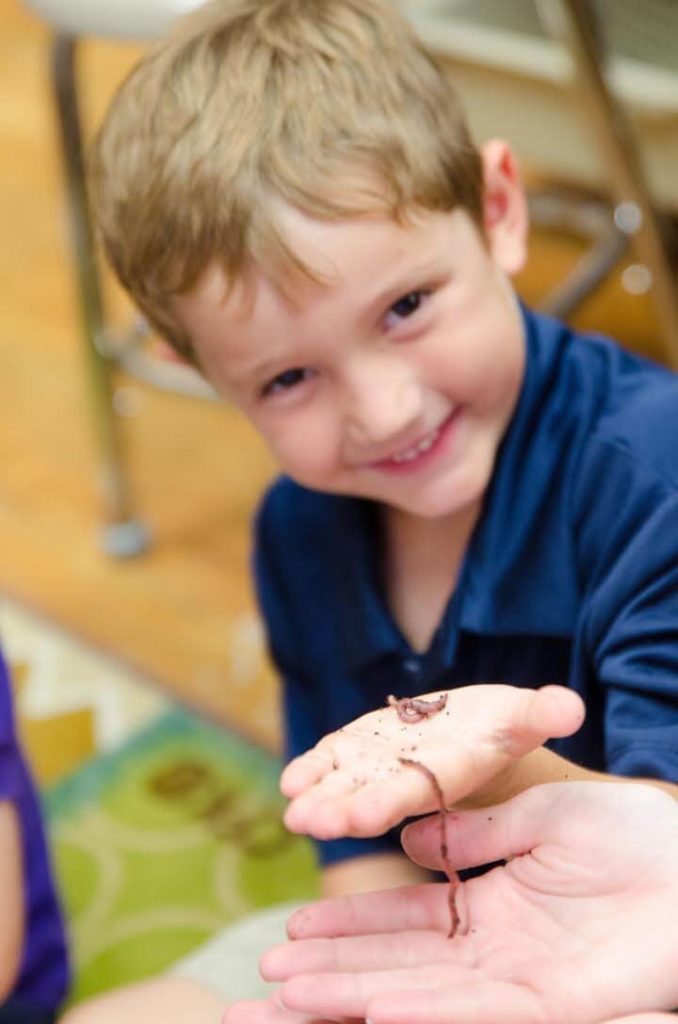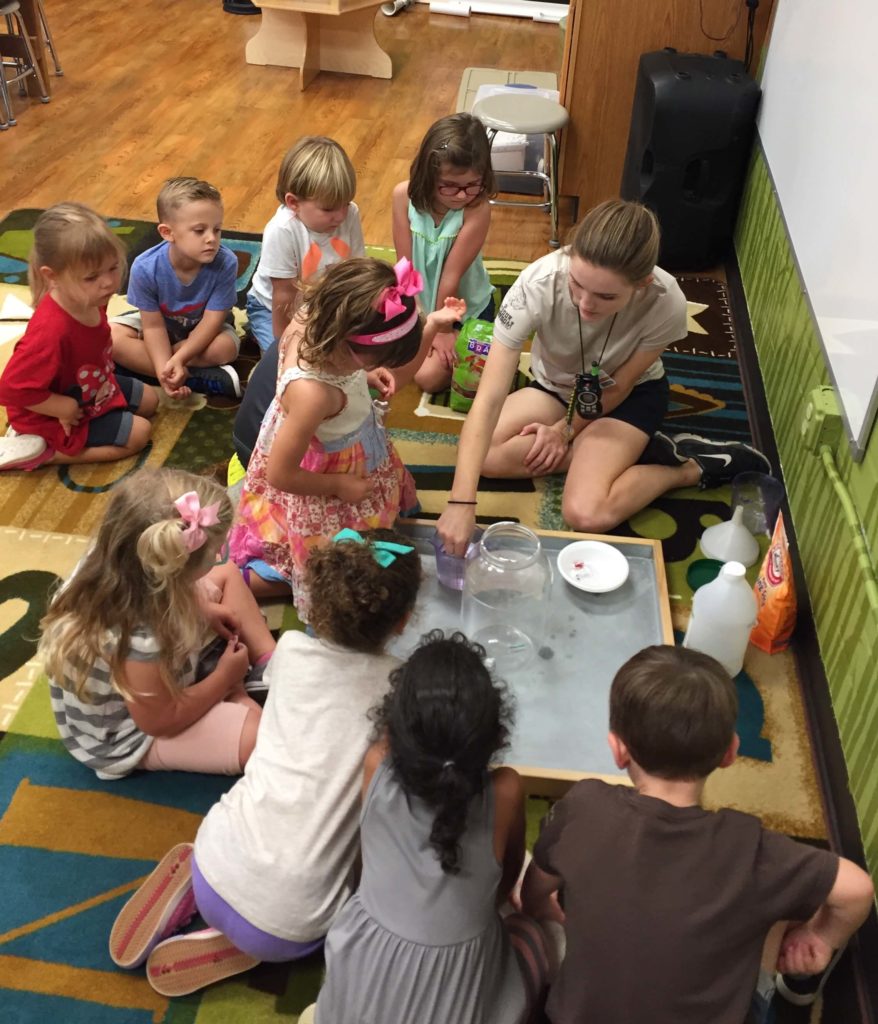
The Outdoor Classroom Explorers Program is a hands-on, scientific based after school program offered to children three to five years old and those in Kindergarten. We utilize the Outdoor Classroom as well as the Lab where students get a chance to be scientists and study the world around them. Each week we focus on a different scientific theme, like weather, volcanoes, dinosaurs, chemical reactions, habitats, and much more. I try to incorporate experiments and activities where the children are actively engaged and always asking questions to further their discovery.

Over the past couple weeks, we learned about what plants need to grow and different types of habitats that animals live in. This week, to build upon both of these topics, we studied earthworms! We shared what we already knew about worms, like what they look like and what they do, but we also learned the body parts and why worms are helpful to the Earth, especially to plants. We then got the chance to observe, touch and even hold live earthworms! It was interesting to see how they moved, the variety of colors they were and how they felt. We loved letting the worms crawl all over our hands and arms! They even did little dances for us. This movement is actually a defense mechanism when the worms think they are in danger. They thrash around until they feel safe again. We really enjoyed our time with the worms!

In addition to our wormy encounter, we were also able to do an experiment called “Dancing Worms.” We each covered a gummy worm in baking soda, aka their “dancing clothes”, placed them in a jar and hypothesized what we thought would happen if we added vinegar. One of the children said, “ I think the powder will dissolve in the vinegar.” Another one thought it would create an explosion. Once the vinegar was added, we observed the baking soda react with the vinegar creating a chemical reaction with lots of bubbles and dancing worms! The children were intrigued by the reaction and we then discussed our conclusion that when baking soda and vinegar mix, it creates a chemical reaction. I always try to approach our experiments with the scientific method to teach the children how real scientists do their research. Looking forward to future experiments and discoveries with my little scientists!